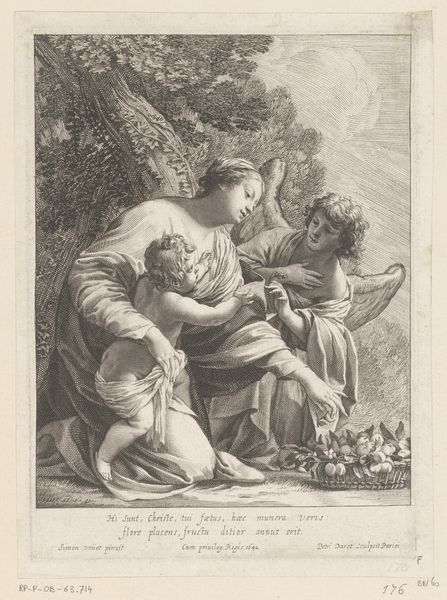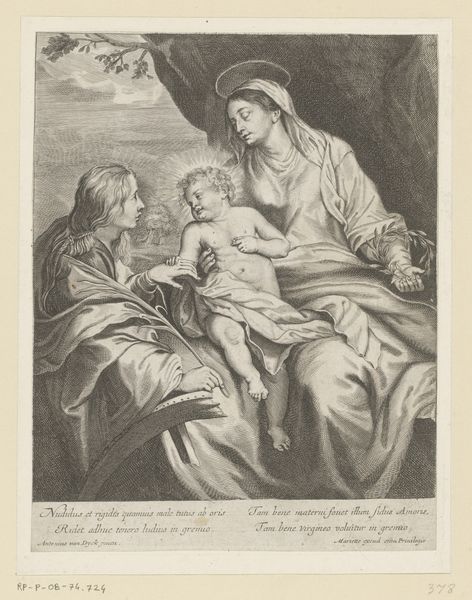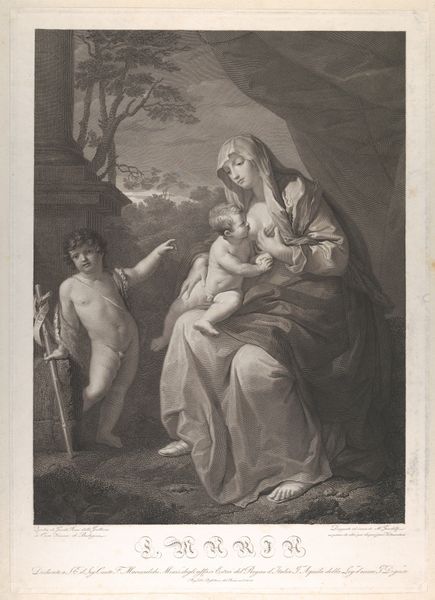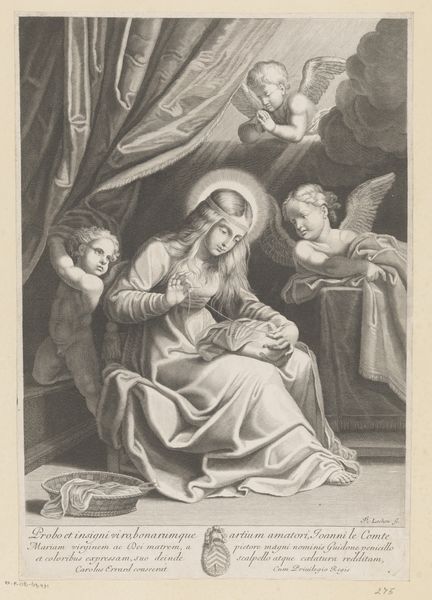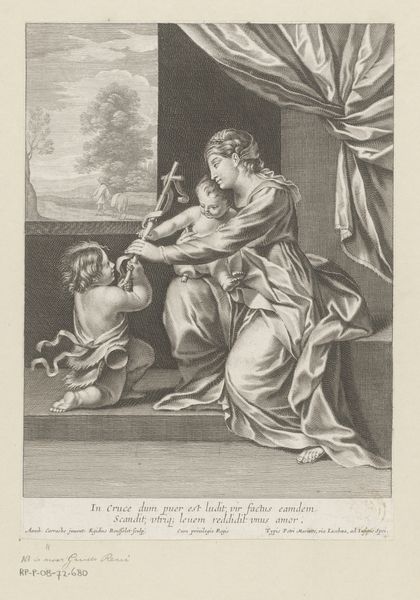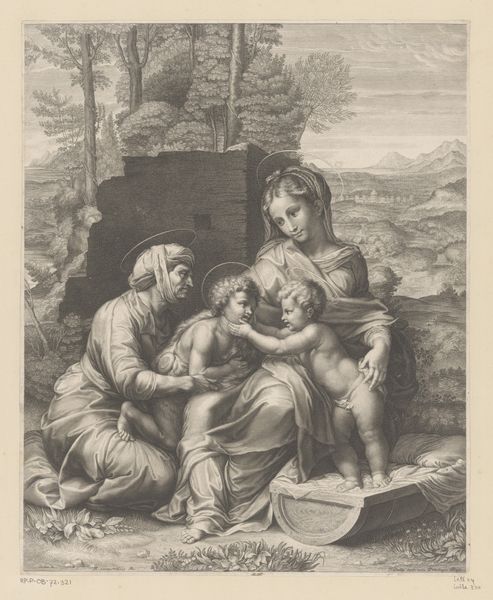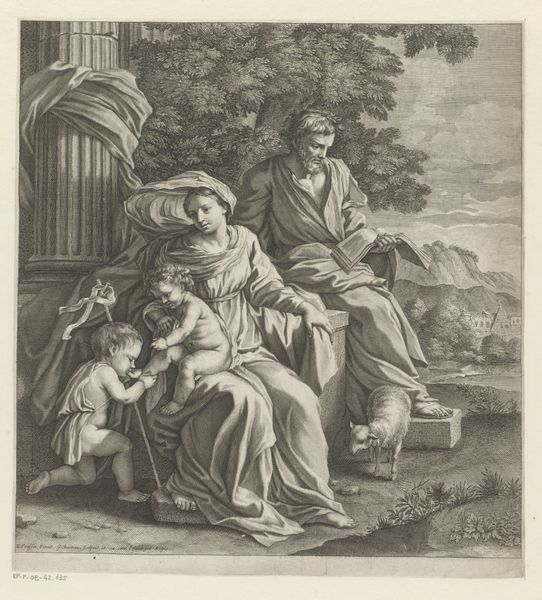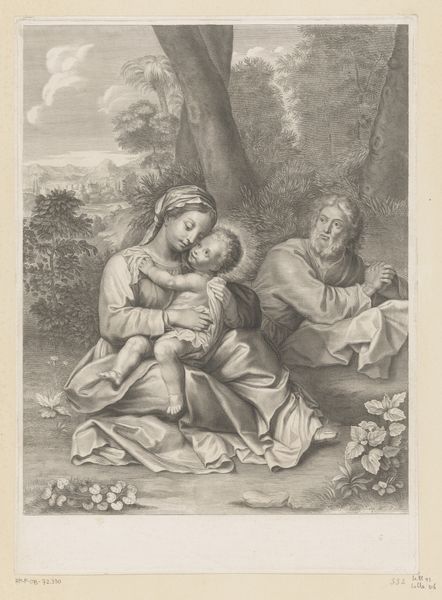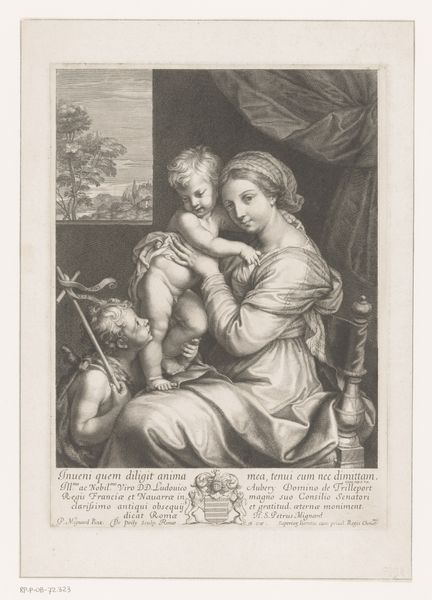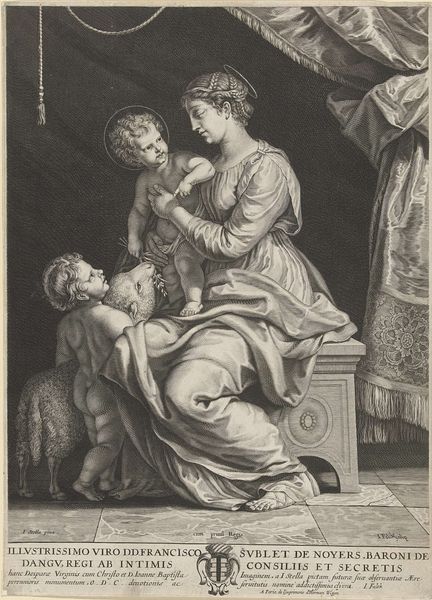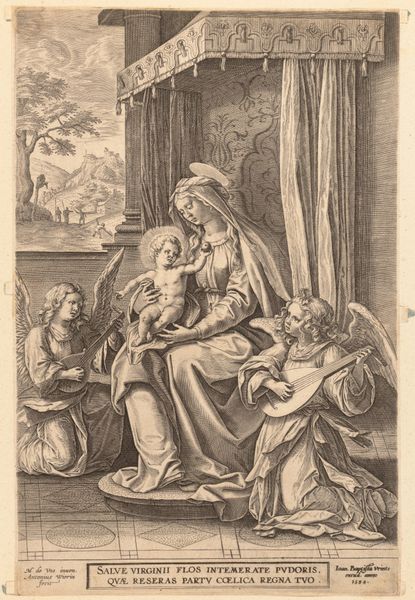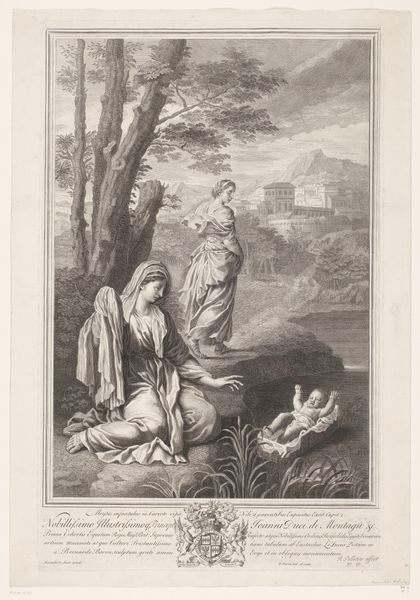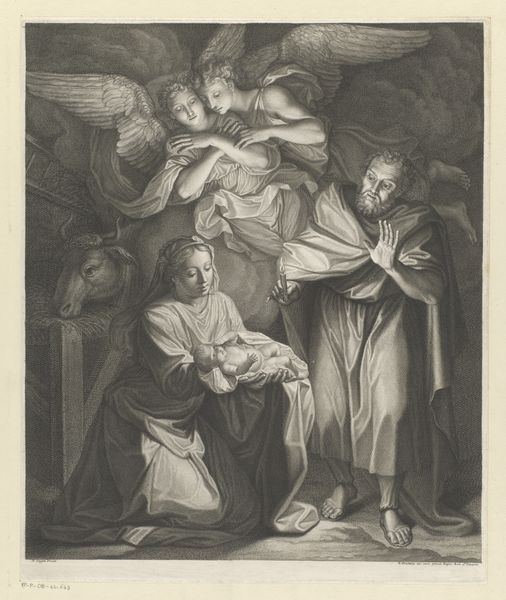
print, engraving
#
portrait
#
baroque
# print
#
old engraving style
#
figuration
#
19th century
#
history-painting
#
engraving
Dimensions: height 418 mm, width 298 mm
Copyright: Rijks Museum: Open Domain
Editor: This is "Maria en Johannes de Doper bij slapend Christuskind," or "Mary and John the Baptist with the Sleeping Christ Child," an engraving by François de Poilly made sometime between 1648 and 1681. I'm immediately struck by how tender, yet melancholic, it feels. The ruined architecture in the background adds to this somber mood. What do you see in this piece? Curator: Indeed. The iconography here is rich and complex. The sleeping Christ child, presented to us almost as a sacrifice laid bare, speaks to the central Christian narrative. Note how Mary holds a veil, alluding both to concealment and revelation. Do you recognize its symbolism? Editor: It’s like she’s hinting at something… the unveiling of Christ's divinity? Curator: Precisely! It is a powerful symbol that speaks to his future, a future interwoven with sacrifice. Look also at the young John the Baptist in prayer. This imagery highlights his role as precursor and witness. But even more significant is the architectural ruin. These evoke themes of transience and mortality, contrasting sharply with the eternal promise represented by Christ. Do you feel this tension? Editor: I do. So, it's not just about presenting a holy scene but placing it within a framework of human vulnerability and history? Curator: Precisely. Consider too the book beside Christ. Do you think it has any relevance to the composition and atmosphere of the scene? Editor: Could it symbolize destiny or fate, as it hints at things written beforehand, things that are immutable or predestined? Curator: Absolutely, your interpretation is spot on. The visual motifs presented here all underscore a predetermined, unavoidable future. We now start seeing this somber mood. Editor: That's incredible. I would not have grasped the meaning behind this work if it weren’t for its underlying cultural references! Curator: Exactly! It’s like the symbolic vocabulary of its time becomes alive again.
Comments
No comments
Be the first to comment and join the conversation on the ultimate creative platform.
